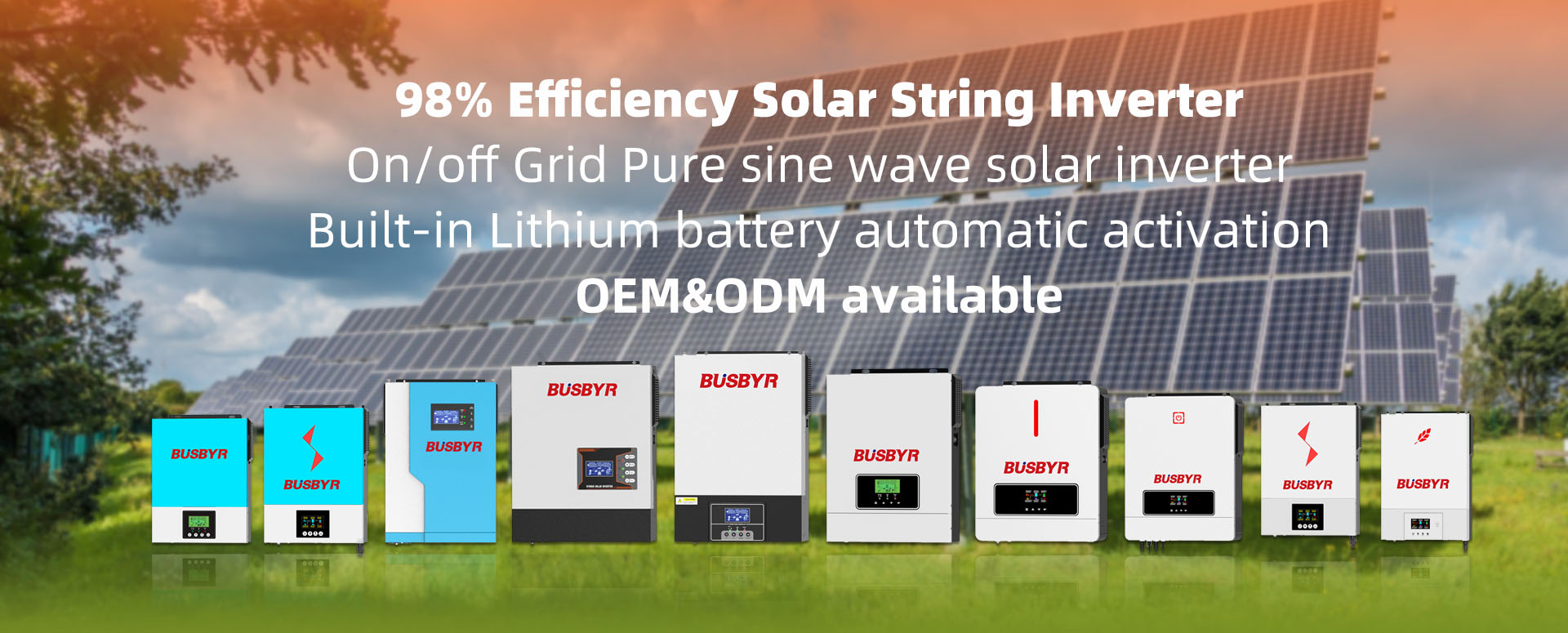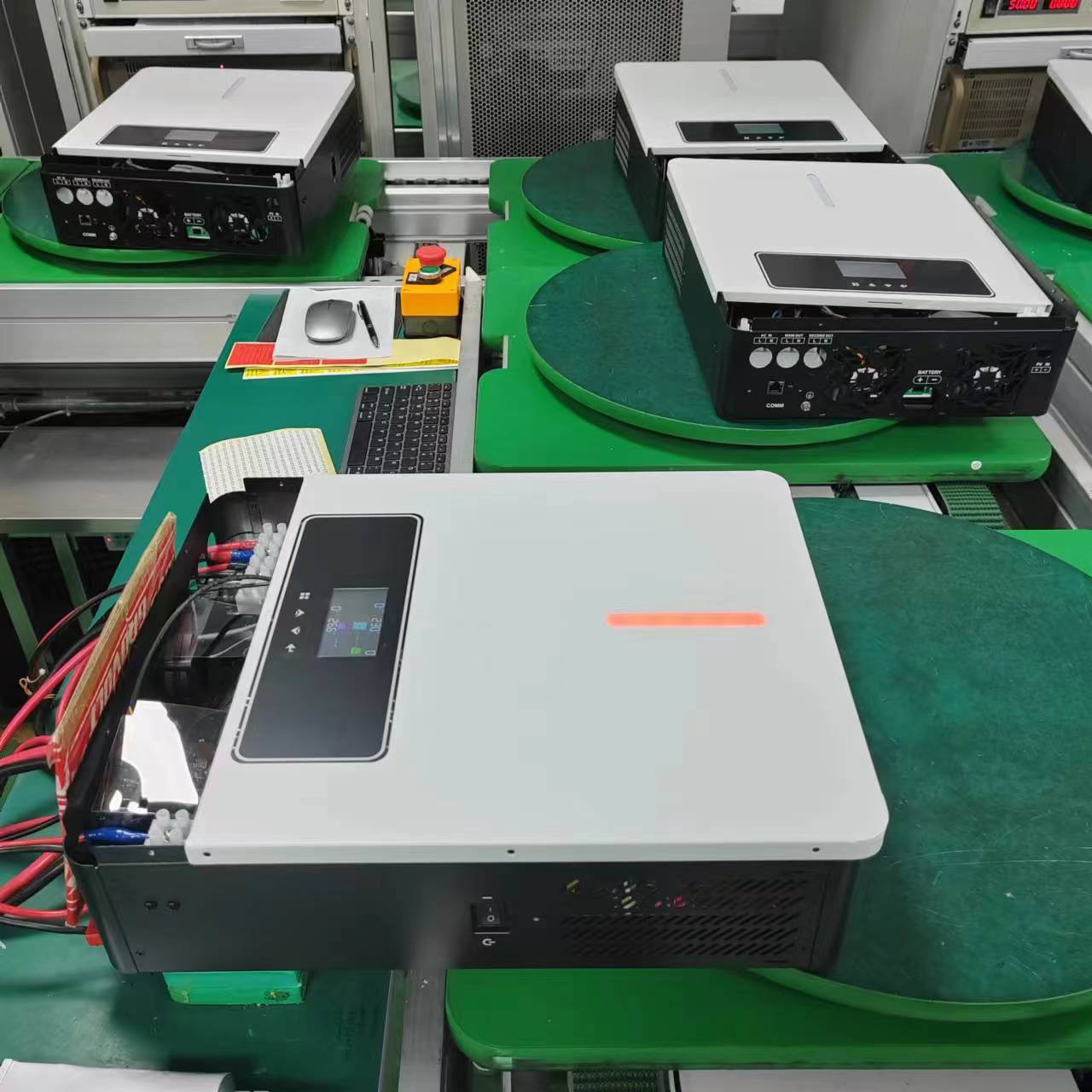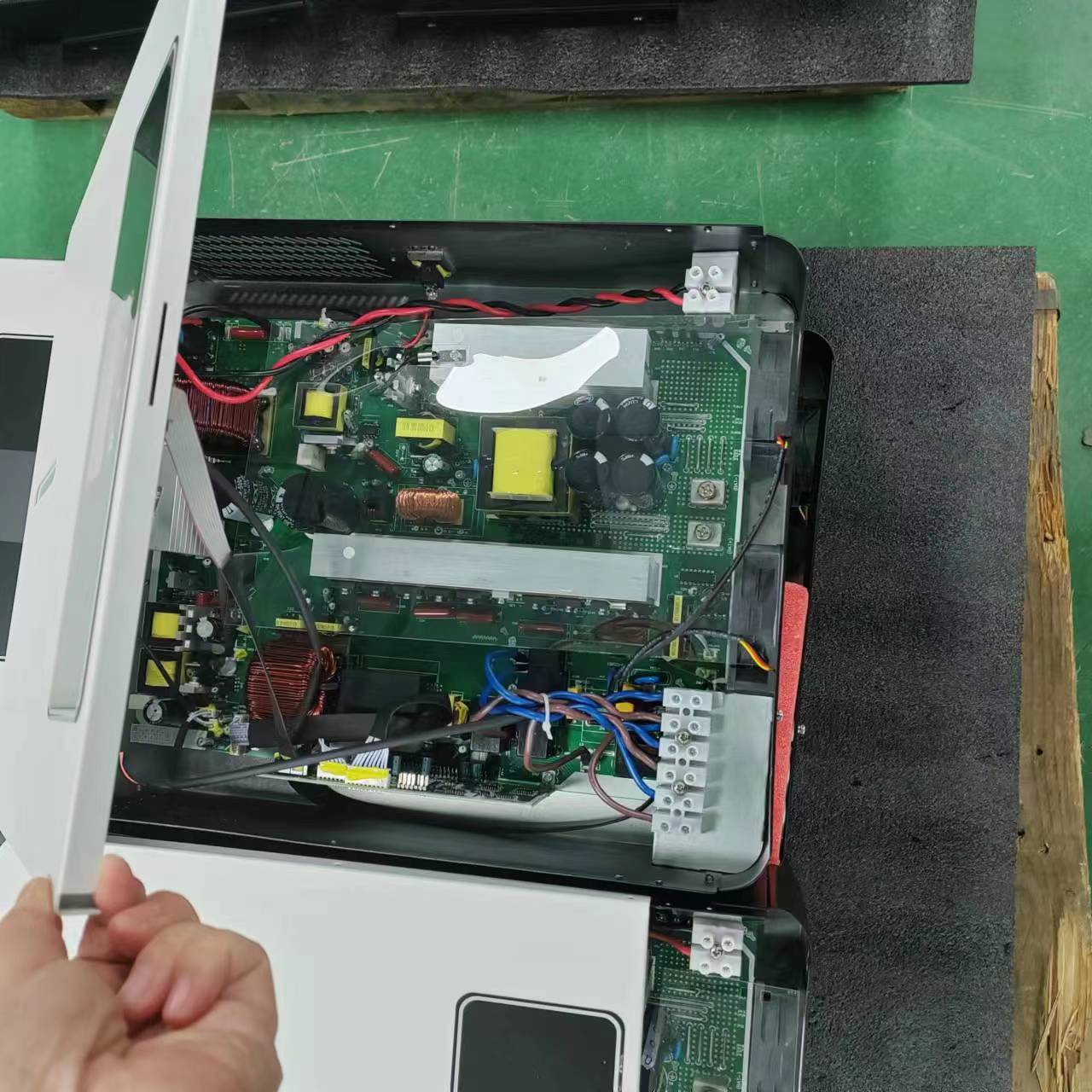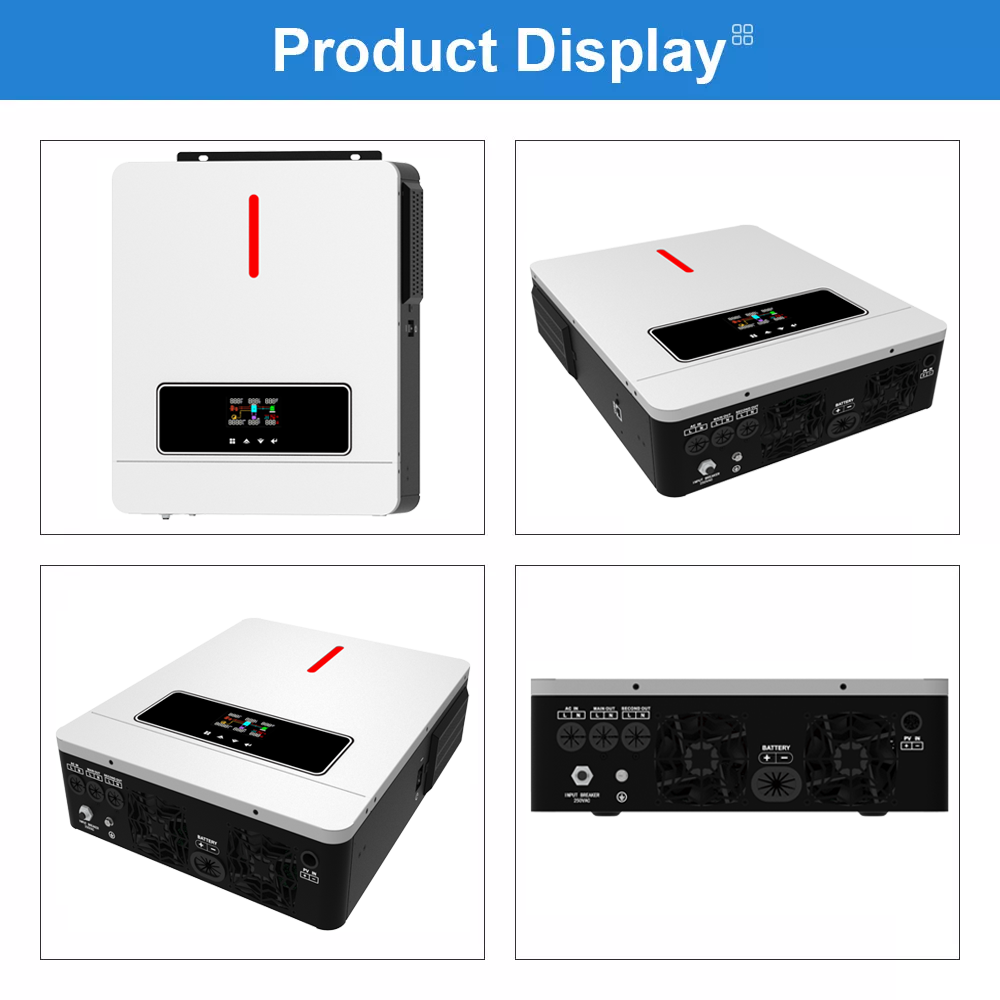News
How to choose a high-quality solar inverter for residential photovoltaics?
The capacity of solar inverter for residential photovoltaics is generally around 5-10KW , and it is necessary to choose an quality solar inverter with high conversion efficiency and good quality components.
The inverter converts DC power (battery, storage battery) into AC power (generally 220V, 50Hz sine wave). It consists of inverter bridge, control logic and filter circuit. Widely used in air conditioners, home theaters, electric grinding wheels, electric tools, sewing machines, DVD, VCD, computers, TVs, washing machines, range hoods, refrigerators, VCRs, massagers, fans, lighting, etc.

Does a photovoltaic system need an inverter?
The grid-connected photovoltaic system needs an inverter because it needs to convert direct current into alternating current and inject electric energy into the grid; while the need for an inverter for a separate photovoltaic system depends on its use and configuration. Some electrical appliances, such as for powering houses and pumping stations, need inverters to convert DC to AC for power supply; if a separate photovoltaic system is used to charge batteries, such as solar street lamps, solar water heaters, etc., you can No inverter is needed as they can store direct current directly into the battery. The inverter is a converter that converts DC power (battery, storage battery) into constant frequency and constant voltage or frequency modulation and voltage modulation AC (220V, 50Hz sine wave).

BUSBYR manufactures solar inverters and other energy storage solutions and is headquartered in Shenzhen, China. in the solar module industry.
Proper selection of inverters as the basis for an efficient system
Depending on your input voltage and output voltage, you can determine the primary-secondary turns ratio. Generally, the input voltage of the inverter is 12V, 24V, 36V, 48V, and there are other models with input voltage, while the output voltage is generally 220V. Of course, there are other models that can output different required voltages. The price and quality of the inverter are mainly determined by the following parameters: output power, conversion efficiency, and output waveform quality. Just compare these parameters to know the quality of this inverter. Inverter is a kind of commonly used equipment. As long as it belongs to the commonly used model, it is generally sold at electrical maintenance points and almost all electronic markets. More repairable. If it is a very useful model or the power is very high, you can only go to the electronic market or order it online. An inverter is a device that converts DC power into AC power (usually 220V, 50Hz sine wave). It does the opposite of a rectifier, which converts AC power to DC power. The inverter is composed of an inverter bridge, a control unit and a filter circuit. Widely used in air conditioners, electric tools, computers, televisions, washing machines, refrigerators, massagers and other electrical appliances.
The following points must be paid attention to when selecting and using the inverter:
1) The DC voltage must match;
Each inverter has a nominal voltage, such as 12V, 24V, etc.,
It is required that the selected battery voltage must be consistent with the nominal DC input voltage of the inverter. Such as 12V inverter must choose 12V battery.
2) The output power of the inverter must be greater than the maximum power of the electrical appliance;
Especially for some equipment that requires a large amount of starting energy, such as motors, air conditioners, etc., additional power margins are required.
3) The positive and negative poles must be connected correctly
The DC voltage connected to the inverter is marked with positive and negative poles. Generally, red is the positive pole (+), black is the negative pole (-), and the positive and negative poles are also marked on the battery, red is the positive pole (+), and black is the negative pole (-). ), negative to negative (black to black). The diameter of the connecting wire must be thick enough, and the length of the connecting wire should be reduced as much as possible.
4) The charging process and the inverter process cannot be carried out at the same time to avoid damage to the equipment and cause failure.
5) The inverter casing should be properly grounded to avoid personal injury due to electric leakage.
6) In order to avoid electric shock injury, non-professionals are strictly prohibited from disassembling, repairing and modifying the inverter.
The appropriate whole home solar inverter should be selected according to the size of the photovoltaic installation. BUSBYR's ECO series offers single-phase and 120A MPPT inverters with output power ranging from 3kW to 6kW, suitable for small and medium residential installations.

The MAX series of photovoltaic inverters are designed for light commercial installations and are available in options from 7kW to 10kW. BUSBYR also offers string inverters. All of this is high-quality modern photovoltaic technology.
The solar inverter is the most complex part of any grid-connected solar system, and unfortunately, it's also the part where difficulties can arise. This is not surprising since inverters are often placed outdoors in harsh weather conditions such as rain, humidity and extreme heat, generating thousands of watts of power for up to 10 hours a day. Therefore, it is important to use a high-quality inverter and install it in a sheltered location if possible. Due to extreme changes in humidity and temperature, many outdoor-mounted inverters are likely to fail at some point in their lifetime. However, placing your solar inverter in your garage, under a carport and out of direct sunlight can greatly extend its lifespan.

Does a photovoltaic system need an inverter?
In the AC photovoltaic power generation system, the inverter is an indispensable part. At present, due to various technical or policy reasons, it will take a long time to connect all independent photovoltaic AC power generation systems to the national unified grid. Therefore, the market distinguishes photovoltaic inverters into two types: photovoltaic off-grid inverters and photovoltaic grid-connected inverters.
Photovoltaic off-grid quality 5kw solar inverter is a power conversion device, which push-pulls the input DC power, and then inverts it into 220V AC power through the inverter bridge SPWM sinusoidal pulse width modulation technology.
Types and applications of pv inverters
According to different parameters, inverters for photovoltaic installations are divided into:
Possess power-the smallest inverter power is several hundred watts to several kilowatts, and the medium-power inverter-several kilowatts to tens of kilowatts. The power of large central inverters varies from a few hundred kilowatts to several megawatts. For domestic installations, a low or medium power inverter would be suitable, while in the case of an industrial PV plant, a higher power inverter should be used.
Possibility to provide selected network - single phase inverter for single phase network with voltage not exceeding 230V. These networks are often found in homes that need to power standard household appliances and lighting.
Supported PV installations - Inverters are designed to work with systems not connected to the grid (off-grid) when there is an excess of energy, they can charge the battery and then download the unused energy. Grid inverters are synchronized with the grid, allowing excess energy to be transmitted to it and harvested when our installations are not able to provide us with the energy we need.

Features of Busby's full range of pv inverters:
·pure sine wave inverter
·automatic restart when AC power is restored,
·readable, multifunctional LCD display,
·MPPT charge controller with a power of 80A,
·possibility of power supply from the mains or from a generator,
·the ability to change the priority settings of the AC / Solar charger using the LCD display,
·intelligent design of the charger that ensures optimal battery performance,
·configurable input voltage range for home appliances and personal computers via LCD display,
·configurable battery charging current depending on devices and personal computers thanks to the LCD display,
·protection against overload, overheating and short circuit,
cold start function,
·Wi-Fi module can be connected.
BUSBYR New Energy has high quality solar inverter for residential photovoltaics, power ratings from 1.5kW to 10.2 kW allow them to be used in almost any size installation, from single-family homes to large-area installations. With energy storage solutions from BUSBYR, excess energy from photovoltaic systems can be temporarily stored in batteries. Monitoring system includes solutions for handling data transmission of photovoltaic power plants: this ensures reliable plant monitoring and easy integration with other systems. Get the Factory Price Now!


